Indian heavy industries of steel, cement, and aluminium together present a 20 GW solar open access market opportunity despite their reliance on captive coal generation, according to a new analysis by Ember.
The Ember report states that the steel sector alone contributes 9.4 GW to the 20 solar open access opportunity, primarily due to its greater reliance on comparably expensive grid power which can be replaced with open access solar. Cement and aluminum, despite their dependence on inexpensive captive coal-based generation, collectively represent an 11 GW market.
Seizing this opportunity could potentially eliminate 29 million tonnes of emissions annually while cutting production costs, as per the report.
[The open access mechanism allows large industrial consumers to buy renewable power directly from RE power producers, bypassing the electricity distribution companies (discoms). Renewable power is wheeled from RE plants at distant locations directly to their facilities using the common grid infrastructure.]Solar power, on average, could slash production costs by up to 10% for some steel makers. “In some setups, like standalone arc furnaces used in secondary steelmaking, solar could reduce production costs by up to 10%,” states the report.
State-level opportunity
Ember’s analysis finds that heavy industries in Chhattisgarh and Odisha account for nearly 40% of the assessed 20 GW open access solar market. The high concentration of heavy industries, combined with favourable open access regulations, makes these states one of the most attractive markets. Policies offering discounts on cross-subsidy surcharge and various other charges strengthen the business case for renewable procurement across states.
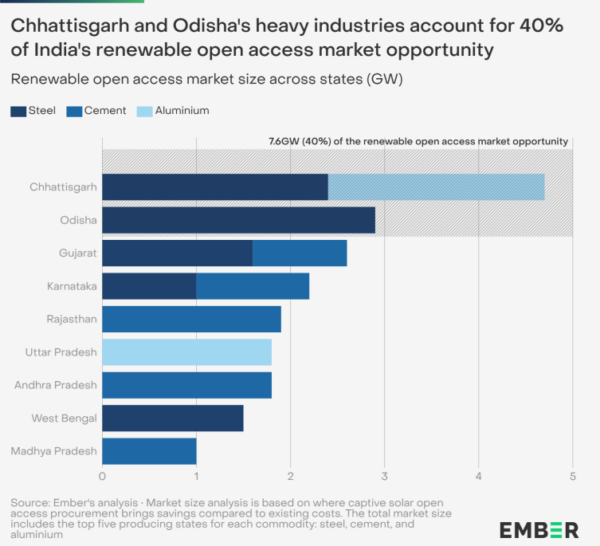
“States such as Odisha and Chhattisgarh have long been legacy industrial hubs, owing to their proximity to rich mineral reserves. By integrating renewable power, they are well-positioned to begin their transformation to green manufacturing hubs. The shift is already in motion — Odisha is now actively envisioning green industrial parks, setting the stage for an export-driven, low-carbon future in manufacturing,” said Duttatreya Das, Asia Analyst at Ember.
Strategic and regulatory gains for industries
Beyond cost saving, renewable adoption also unlocks strategic benefits for industries. Lower emissions intensity can qualify steelmakers under India’s new green steel taxonomy, unlocking access to markets that provide a green premium, and enhancing long-term competitiveness, especially in regions preparing carbon border taxes like the EU.
“India’s industrial sector, one of the hardest to decarbonize, has significant financial incentives to transition through renewable-based electrification. However, policy and institutional barriers must be dismantled to maximize this shift,” said Labanya Prakash Jena, Sustainable Finance Consultant at IEEFA.
24/7 clean power: the next frontier
Sourcing up to 50% of electricity from variable renewable energy (RE) is already cost-competitive for heavy industries. However, pushing beyond this threshold requires more advanced strategies.
“Cost-competitive, near-24/7 renewable energy will power the first wave of industrial decarbonisation and redefine the future of corporate power purchases,” said Neshwin Rodrigues, Senior Energy Analyst, at Ember.
Ember’s modelling shows that sourcing 50% variable renewable energy is possible without integrating storage and is already cost-effective for heavy industries in India today. Increasing RE penetration from 50% to 80% increases the cost to up to 1.4 times the cost of plain vanilla solar generation due to the need for energy storage and managing surplus power. Going further to 90% RE raises costs to around 1.6 times that of plain solar.
“Even so, this remains a reasonable premium when weighed against decarbonisation commitments and growing international mandates for clean supply chains.
Ember’s modelling suggests that achieving 100% (24×7) renewable power could cost 8-11 INR/kWh in India, around 3.5 times the cost of solar. Batteries alone account for 60% of the cost. This level of firming up would require substantial oversizing of RE capacity and a major scale-up in storage. “Renewables are already a cost-effective solution for Indian industries, and 24/7 clean power is the benchmark for the future of renewable procurement. This report highlights that companies can make significant progress toward round-the-clock renewable supply today, with further innovation in storage, flexible demand, and market design needed to achieve full 24/7 coverage at competitive rates,” said Killian Daly, executive director at EnergyTag.
This content is protected by copyright and may not be reused. If you want to cooperate with us and would like to reuse some of our content, please contact: editors@pv-magazine.com.
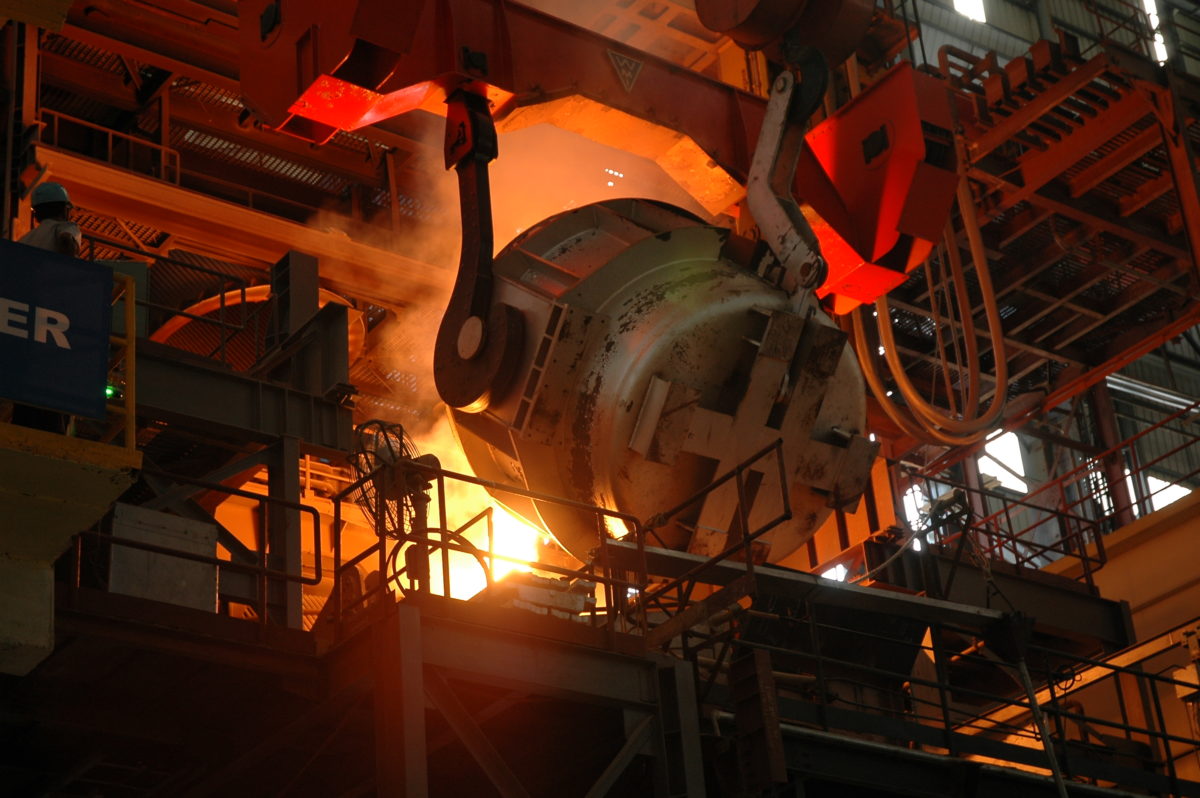
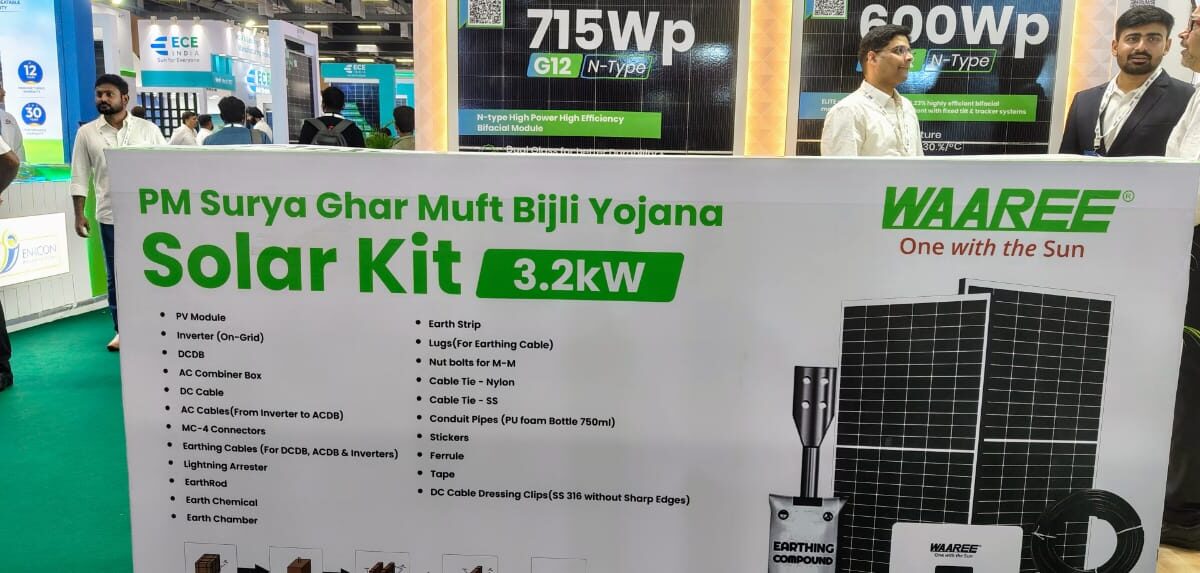



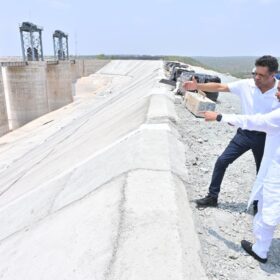
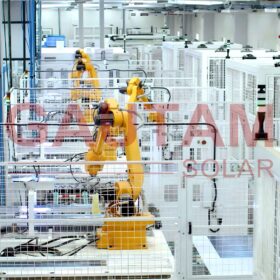
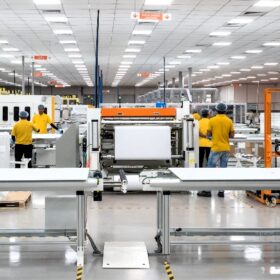
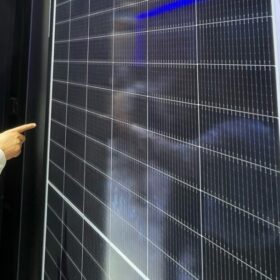
By submitting this form you agree to pv magazine using your data for the purposes of publishing your comment.
Your personal data will only be disclosed or otherwise transmitted to third parties for the purposes of spam filtering or if this is necessary for technical maintenance of the website. Any other transfer to third parties will not take place unless this is justified on the basis of applicable data protection regulations or if pv magazine is legally obliged to do so.
You may revoke this consent at any time with effect for the future, in which case your personal data will be deleted immediately. Otherwise, your data will be deleted if pv magazine has processed your request or the purpose of data storage is fulfilled.
Further information on data privacy can be found in our Data Protection Policy.